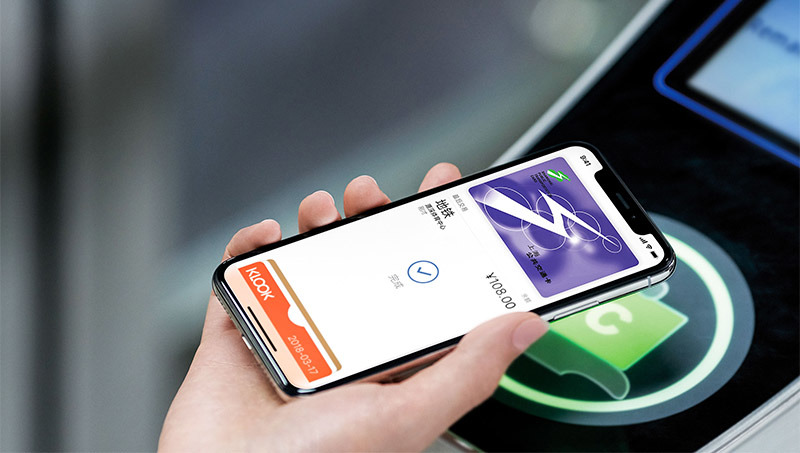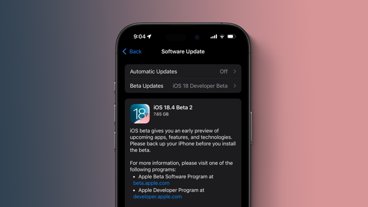Following the release of iOS 11.3 and watchOS 4.3, Apple on Friday began rolling out transit card integration in China, offering iPhone and Apple Watch users in Beijing and Shanghai tap-to-ride public transportation access.
Apple Pay's new support for the Beijing Transportation Smart Card and Shanghai Public Transportation Card was previously teased in an iOS 11.3 beta this month. Integration has yet to be recognized on Apple's regional Apple Pay website, which still lists transit as a beta feature.
Despite word of official support, users in the area are successfully provisioning cards in the Wallet app on iOS, reports Wei Feng. Japanese language blog Ata Distance points to a number of Twitter posts verifying an activation of services.
As noted by Apple, the Beijing Transportation Smart Card provides gate access to local subway and bus lines. While not confirmed, Wei Feng suggests card holders can also use Apple Pay to board buses and trains in cities that support the national China T-Union card.
With the Shanghai Public Transportation Card, Apple Pay's NFC capabilities can be used to access subway, bus, ferry and Maglev routes in that city.
Unlike Japan's Suica integration, users in China can provision a Beijing Transportation Smart Card or Shanghai Public Transportation Card directly from the Wallet app, according to an Apple support document published today. Apple Watch owners must add cards to their wearable via the Watch app on iPhone.
Riders can switch off between physical and digital cards, suggesting the system syncs balances with a central server. Further, the balance of an existing physical card can be transferred to Apple Pay through the recharge mechanism in Wallet.
Apple's new Chinese transit card support is available on iPhone SE, iPhone 6, iPhone 6s, iPhone 7, iPhone 8 and iPhone X, as well as Apple Watch Series 1 models and above.
Apple on its dedicated Apple Pay webpage notes the service can be used to pay for metro fares in Guangzhou and Hangzhou, though NFC-based gate and turnstile access is not available in those cities. This option is similar to in-app fare purchasing features rolled out in New York with the MTA eTix app.
Apple is looking to build out transit card compatibility in a bid to make Apple Pay a more valuable tool for urban dwellers. Last year, the company took steps toward that goal by incorporating global FeliCa technology into its mobile devices, paving the way for expansion into Asian countries.
Most recently, Singapore last year announced plans to extend a trial program that allows bus and train passengers to purchase tickets via contactless payment systems including Apple Pay.
 Mikey Campbell
Mikey Campbell







-m.jpg)






 Christine McKee
Christine McKee
 Marko Zivkovic
Marko Zivkovic
 Mike Wuerthele
Mike Wuerthele

 Amber Neely
Amber Neely
 Sponsored Content
Sponsored Content
 Wesley Hilliard
Wesley Hilliard









4 Comments
Does anyone know if there's a way for an American (me) to get one of these cards for when I go to Shanghai? It would be handy to use this when riding the subway there. I know it's often difficult to get things in China without a national ID because they like to track their citizens closely.
As I read the support documents, the answer seems to be no. At least for the ApplePay portion:
Shanghai Transit cards (NFC) are available from the ticket window on any Metro station and many shops. No ID is required, only a small deposit for the card (refillable). If you are visiting RMB100 including the card deposit should cover at least 2 weeks of daily travel. Most Chinese register their cad with National ID to reclaim the value if the card is lost, but this is optional, and impossible for foreigners. Welcome to my city, I hope you enjoy your visit.
All Chinese and Hong Kong transit cards use central server systems so integrating to them is not a major technical issue. The cards are simply a number isn the system and the central server keeps the balance, so they can be topped-up by various means including WePay, AliPay and now ApplePay. However, Apple was too slow coming to market in China, and only in the past year have some big stores started using it in certain cities, so honestly speaking it is not very popular or useful. The USA and Europe are far behind Asia on e-payment. When Apple was introducing Apple Play to the USA, WePay was already popular in China and AliPay was rolling out. Apple did not even start working on partnering with Union Pay to support ApplePay when the others were already ubiquitous, and since Apple Pay is platform dedicated to iPhone is at a disadvantage attracting merchants. On the other hand, I can already use WePay (WeChat) on my iPhone in some place of the USA such as San Francisco, so I have no immediate plans to subscribe to ApplePay. To understand the situation in China, WePay and AliPay can be used almost anywhere in China and in any shop since the shop only needs an internet connection and a simple bar code/QR code reader base station to host it, the pay portals manage the process. I think Apple got bogged down dealing with banks and credit card companies in the USA at the expense of putting attention in other regions that moved faster. That is too bad, because, as a loyal Apple customer I wanted them to be quick but they were not, so they are now a niche player in China.